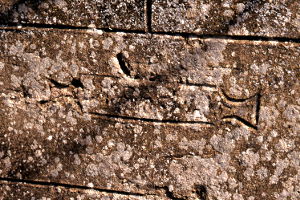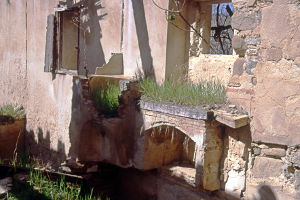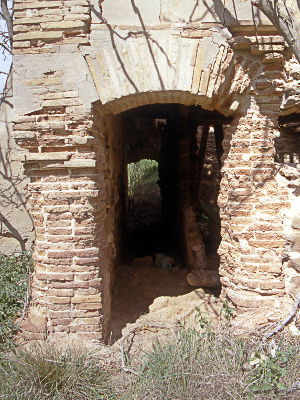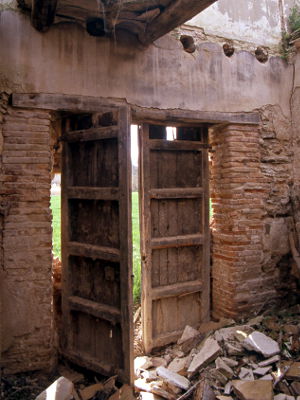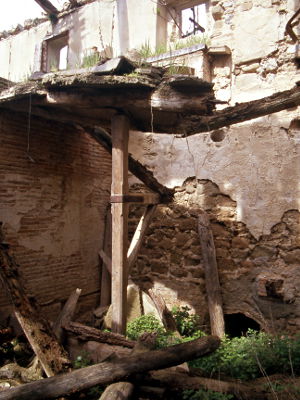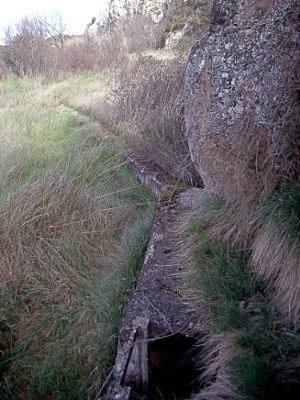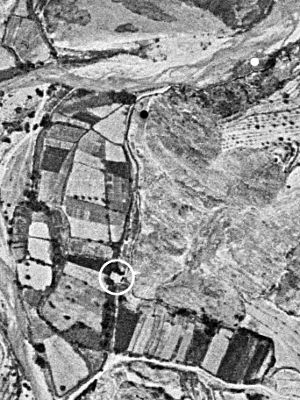Path: Introduction -
Visit the mills; catalogue - San Esteban de Litera

Mills in Altoaragón - harinero
San Esteban de Litera

San Esteban de Litera is situated
in the Litera region lying on the East side of Monzón (South of Barbastro along the Autovía
Huesca - Lerida). Leave the motorway in Binéfar and take the A-133 to Azanuy and Fonz. In San Esteban, stay on the main road which rounds the village. You will soon find a cross roads with at your right side a bus stop and a sign listing the main attractions of the village. This is the Calle del Molino.
Turn left (there is a sign: Area Recreativa Río Sosa). After about 3 km there is a sharp turn to the left. You'll see the mill (1) at the far end of a field on your right side. There is a small spot adequate for your vehicle, but you could continue to the Area nearby and then walk back.
The mill used water from the Río Sosa.
The mill used water from the Río Sosa.
Pictures: 03.IV.2013



